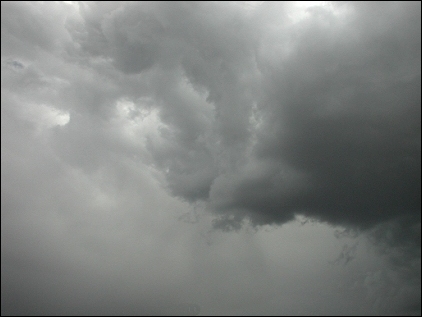

Ah, to be a cloud, floating weightlessly, wafted here and there by gentle breezes. Well, considering spring winds, maybe not gentle breezes, but surely clouds don't have a weight problem. Or do they? After all, clouds are made of water droplets, and water's heavy.
Although clouds come in all sizes, we can make a few assumptions to see
just how nebulous they really are. Let's take a pretty good sized one, and mentally
harass it into a sphere with a radius of a kilometer, since it's a lot easier to
figure out the volume of a sphere than trying to take into account all the bulges of a
real cloud. There's one more problem though. Clouds vary a lot in their density, so
a cubic meter of cloud can hold between about 1/10 of a gram to over 5 grams. OK,
let's pick a figure of 1 gram. The 4 billion cubic meters of our tame cloud, then,
weighs 4 billion grams, or 4 million kilograms—or in English, about 8,800,000
pounds! Fluffy? I think not!

Contributor: Arthur H. Harris, Laboratory for Environmental Biology, Centennial Museum, University of Texas at El Paso.
Desert Diary is a joint production of the Centennial Museum and KTEP National Public Radio at the University of Texas at El Paso.

Chihuahuan Desert monsoon clouds. Fluffy? Photograph by A. H. Harris.